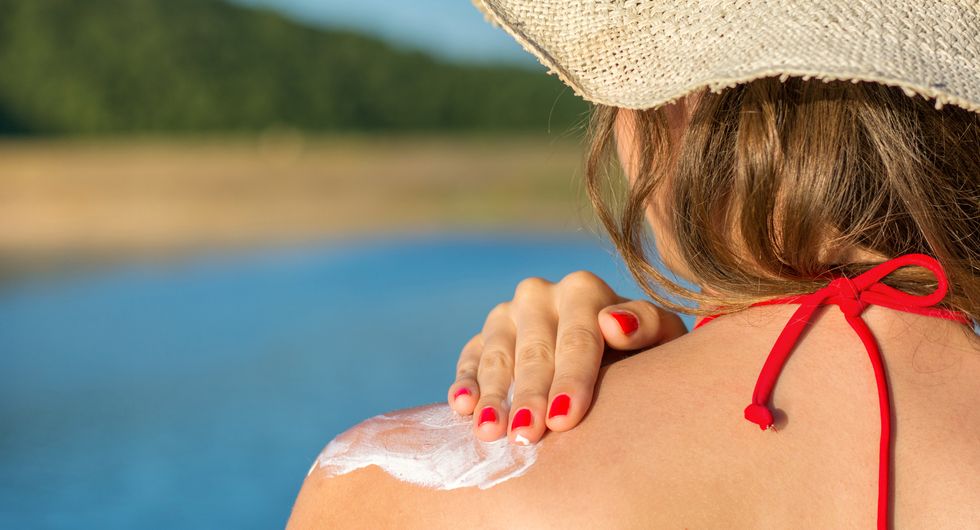
iStock.com/Creative-Family
How Safe and Effective Is Your Sunscreen?
It may be easier than ever to find sunscreen with all the right stuff, but be sure to read the label or you could still get burned.
Aug 12, 2017
Jan 31, 2023
Skin Cancer
Learn about our editorial policies

FRIDAY, Aug. 11, 2017 (HealthDay News)—It may be easier than ever to find sunscreen with all the right stuff, but be sure to read the label or you could still get burned.
Most sunscreens sold at major U.S. retailers and their websites now offer broad-spectrum protection, are water-resistant and have an SPF (sun protection factor) of 30 or higher as the American Academy of Dermatology (AAD) recommends, a new study found.
But more than a third of sunscreens sold by several of the nation's largest retailers fell short. Forty-one percent of sunscreens did not meet all three recommendations, researchers from the University of Miami and University of Michigan reported.
Tanning and bronzing products, in particular, tended to be lacking, the researchers said.
In a follow-up to a 2014 study, the researchers checked more than 470 sunscreens available at big pharmacy websites to see if they met the AAD guidelines.
"Even in just three years, we've seen pretty impressive improvement," said Dr. Matilda Nicholas, a board-certified dermatologist at Duke Health in Durham, N.C. "But I think there's still confusion, based on what my patients ask me."
The study found:
"We had hypothesized that not much would have changed, but there were some positive results and hopefully, we will continue to move in the right direction," said study corresponding author Dr. Ariel Eva Eber, of the University of Miami Miller School of Medicine.
She said the availability of more products with broad-spectrum protection was especially positive.
"It's the one thing that maybe a general person would not understand about," Eber said. "They hear about SPF and water resistance, but if someone just went aimlessly to pick sunscreen off a shelf, they'd probably end up with one with broad-spectrum coverage, and that's encouraging."
Alex Webb of Hillsborough, N.C., spends a lot of time outdoors. He hikes, hunts and fishes and works part-time for a construction company. Like many baby boomers, he had some bad sunburns as a kid, boosting his skin cancer risk. So he tries to be careful.
"When I'm out in the sun, I apply sunscreen, wear a brimmed hat and sunglasses," said Webb, 64. "I also have a couple of SPF long sleeve shirts of thin material for hot weather. I look for some shade and take an umbrella for the beach."
He's also extra careful at the shore, mindful that the reflection from water and sand "seems to make you burn quicker."
That's savvy strategy, according to Duke's Nicholas, who noted many people seem confused about sun protection. She suspects it's because there are so many different sunscreens—from lotions to foams to sprays.
Her No. 1 recommendation: Look for a product containing zinc oxide.
The same ingredient in diaper creams, zinc oxide blocks both UVA and UVB rays, Nicholas said. For kids and adults who sweat or swim a lot, zinc oxide sticks are easy to use. Products containing titanium dioxide are also effective sunblockers, she added.
"If you choose zinc oxide 30 SPF or higher, it'd be pretty hard to go wrong. But I remind my patients that no sunscreen will work if you don't use it," Nicholas said.
And, she added, don't be stingy. Most people use too little product. A golf-ball-sized glob will provide head-to-toe coverage for most, and it should be reapplied every two hours—at least.
If you're swimming or sweating a lot, reapply every 40 to 80 minutes as directed on the label. Products designed for wet skin can be slathered on without toweling off, and different formulas have different feels, Nicholas said. Choose one that offers good protection and has a feel you like.
Be wary of so-called "natural" products with herbal ingredients, she advised, and compare product labels. Products marketed for infants often have ingredients identical to others but may cost more.
The safest strategy is also the cheapest.
"It's hard for people to hear this, but sometimes it's just best to seek shade in the middle of the day," Nicholas said. "In the summer, it's really challenging to completely protect yourself."
The study was published as a letter in the August issue of the Journal of the American Academy of Dermatology.
SOURCES: Ariel Eva Eber, M.D., University of Miami Miller School of Medicine; Matilda Nicholas, M.D., Ph.D., dermatologist, Duke Health, and associate professor, dermatology, Duke University, Durham, N.C.; Alex Webb, outdoorsman/construction worker, Hillsborough, N.C.; August 2017, Journal of the American Academy of Dermatology
Copyright © 2017 HealthDay. All rights reserved.